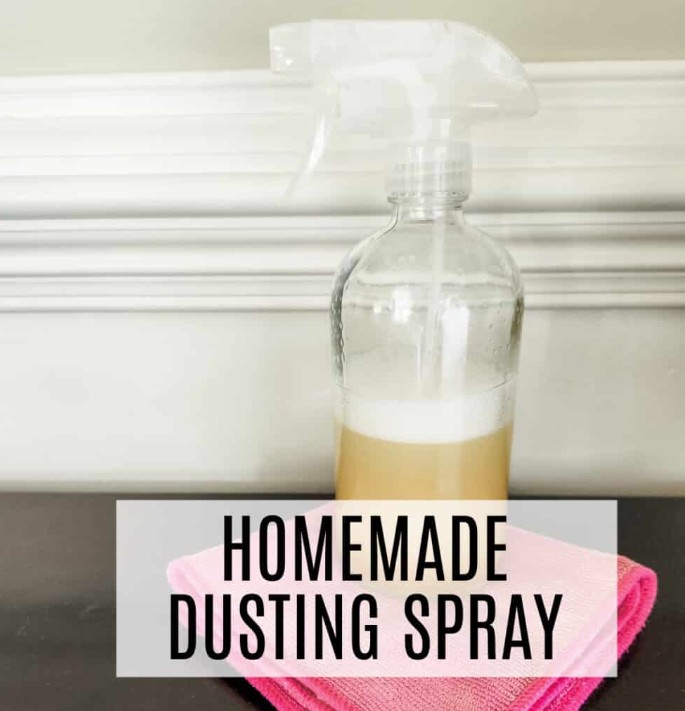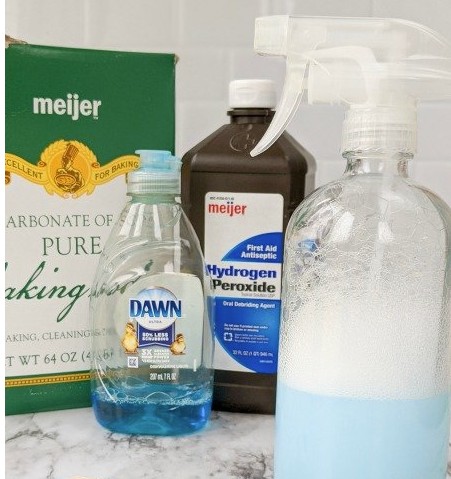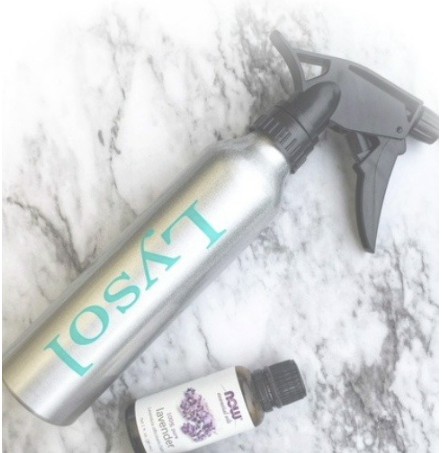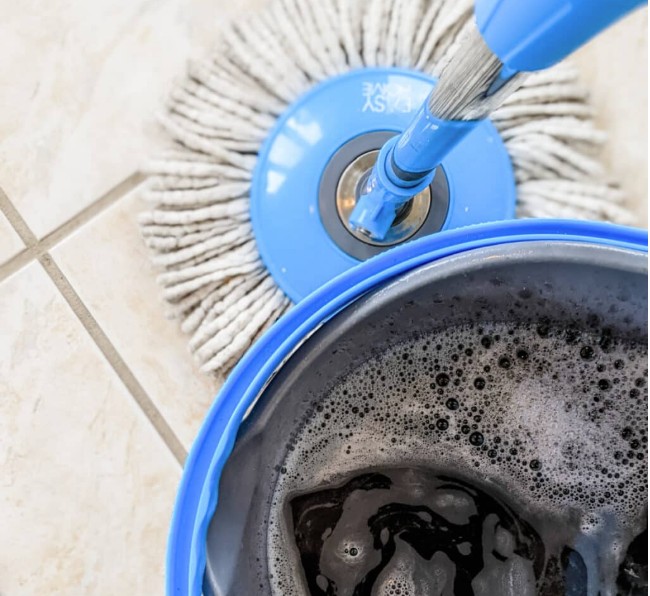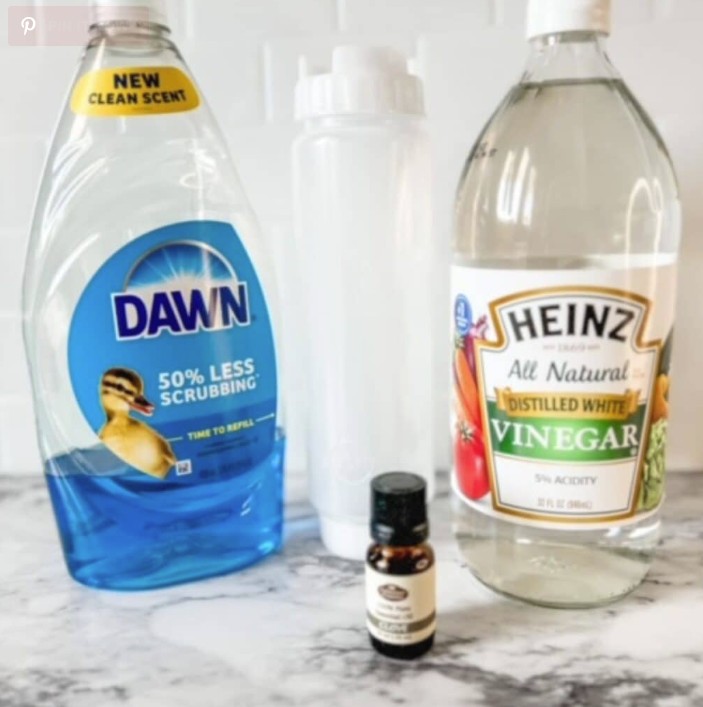Dust settles on every surface and reappears soon after you clean. It sticks to bookshelves, fans, side tables, and more. Store-bought sprays often leave a chemical smell behind. Many people sneeze or get itchy eyes after dusting because of the scents and unknown chemicals in those products. The good news is you can make a DIY dusting spray at home for just a few dollars. You’ll use simple ingredients from your kitchen. This spray will freshen your home without harsh chemicals or extra plastic waste. Dusting often keeps the air cleaner and the house feeling livelier. With a quick DIY spray, dusting becomes safe, easy, and gentle on your budget.
DIY Dusting Spray Recipes
You don’t need a chemistry degree or fancy supplies for great results. The best natural dusting sprays mix a few common household staples, remove dust and add a soft, natural scent—sometimes even better than the big-name brands. Here are tried-and-true recipes that work, each with its own perks.
How to Make Natural Dusting Spray
It takes less than two minutes to mix this basic, plant-based spray. I love starting with this one, especially when I want to skip vinegar but still get a clean, glossy look.
Ingredients:
- 1/2 cup cool water
- 1/3 cup olive oil
- 10-15 drops lemon essential oil
Instructions:
- Grab a clean spray bottle (glass is ideal).
- Add the water using a funnel to avoid spills.
- Pour in the olive oil.
- Add lemon essential oil (the more drops, the sunnier it smells).
- Shake well before each use.
This spray leaves surfaces shiny, with a crisp citrus scent. Olive oil helps trap dust so your cloth can pick up more with one swipe. Lemon oil gives that just-cleaned scent—no synthetic fragrances needed.
Basic Vinegar and Olive Oil Dusting Spray
This recipe has stood the test of time in my house. Vinegar is a classic cleaning staple, breaking down sticky residues while olive oil lifts and traps dust. The result? Surfaces look clean, not smeared.
What You’ll Need
- 1/3 cup olive oil (or sweet almond oil if you prefer)
- 1/2 cup water (filtered or tap works)
- 1/4 cup white vinegar
- 10 drops lemon essential oil (or another preferred scent)
- Spray bottle (bulk packs from Amazon are my go-to)
- Funnel (saves messes and time)
Directions:
- Using the funnel, add vinegar, olive oil, water, and essential oils to the spray bottle.
- Shake until combined (it separates quickly, so shake before each use).
How it works: The vinegar cuts grease and sticky spots, olive oil grabs dust, and the essential oils add freshness. Water helps everything blend and makes it lighter for fine misting.
Best for: Wood, laminate, plastic, most sealed surfaces. Avoid unfinished wood, as too much moisture can warp it.
Expert tip: For a scent that mimics Pledge, use lemon or orange essential oil—my kitchen never smelled cleaner.
Citrus-Powered Dusting Spray for Extra Freshness
If you love experimenting or hate waste, this spray uses leftover citrus peels. The natural oils from citrus help lift dust, wipe away fingerprints, and leave a clean scent. Plus, it turns “garbage” into something useful.
Ingredients:
- Peels from 2-3 lemons, oranges, or both
- 1 cup distilled white vinegar
- 1 cup water
- 2 tablespoons olive oil
- 5-10 drops lemon or orange essential oil (optional)
Instructions:
- Stuff citrus peels into a clean glass jar.
- Cover with vinegar, close the lid, and let sit for at least 3 days (up to a week is better).
- Strain out peels and pour the infused vinegar into a spray bottle.
- Add water, olive oil, and essential oils.
- Shake well before each use.
Tips: If you’re worried about citrus oil residue, skip this recipe on electronics or glass. It shines wood and plastic but can streak screens.
Alcohol-Free Gentle Dusting Spray for Delicate Surfaces
Some surfaces are fussy—anti-glare TV screens, computer monitors, glossy pianos, or antiques. For those, you want no acids, no alcohol, no sticky oils. This gentle blend is my go-to for dusting electronics and anything that scratches easily.

Ingredients:
- 1 cup distilled water
- 2 teaspoons olive oil or sweet almond oil
- 5 drops lavender, chamomile, or lemon essential oil (optional)
Instructions:
- Combine water and oil in a clean spray bottle.
- Add essential oil if you like mild scent.
- Shake gently before use.
Key benefit: This blend removes dust without leaving a greasy film or damaging sensitive finishes. Safe for screens, piano keys, plastic frames, or softwood furniture.


Using The Homemade Pledge
Use a dry cloth first to get rid of any debris (like crumbs on the dining room table or animal fur on the coffee table in the living room).
Best Practices for Dusting Different Types of Surfaces
- Wood: Always dust with the grain. Spray your cloth, not the surface, to avoid oversaturation. Buff with a dry cloth for instant shine. I like the microfiber cloths the best.
- Plastic: Spritz lightly and wipe in circles. Most plastics can handle the olive oil recipes, but test a spot first if the finish is matte.
- Glass: Use citrus-powered spray sparingly and avoid olive oil (it streaks). A mix of half vinegar and half water with essential oil works best here.
- Electronics: Never spray directly at screens or vents. Lightly mist a microfiber cloth and gently wipe. Choose only alcohol-free, gentle recipes for electronics or delicate finishes.
Storage Tips and Shelf Life of Homemade Sprays
- Store sprays in glass bottles if possible. Some oils and vinegars react to plastic over time, breaking down the bottle or changing the scent.
- Keep out of direct sunlight. Heat and light can make oils go rancid or fade essential oil scents fast.
- Check your spray every few weeks. If it smells odd, changes color, or has floating bits, toss it and make a fresh batch.
- For longest shelf life, mix up small batches. Most recipes last 2-4 weeks when stored in a cool, dark place.
Helpful Tips
- I’ve never had any problems using this spray, but always recommend testing in a small area first.
- I am not brand picky with essential oils, but I do love Fabulous Frannie essential oils but I have noticed there are cheaper brands on Amazon. You can head over here.
- Give the bottle a good shake each time before use, as it’s natural for the oil and water to separate.
- If you would rather have a fragrance free spray, leave out the essential oil. However, if you are using the vinegar in the solution we recommend keeping it to mask the vinegar smell.
- It’s best to use a feather duster on a regular basis to reduce the dust, and go in with the spray every couple of weeks. Fabric softener sheets are another great option to trap dust.
- Store the spray out of direct sunlight.
- Fractionated coconut oil can also be used and will not leave a sticky residue like some carrier oils.











